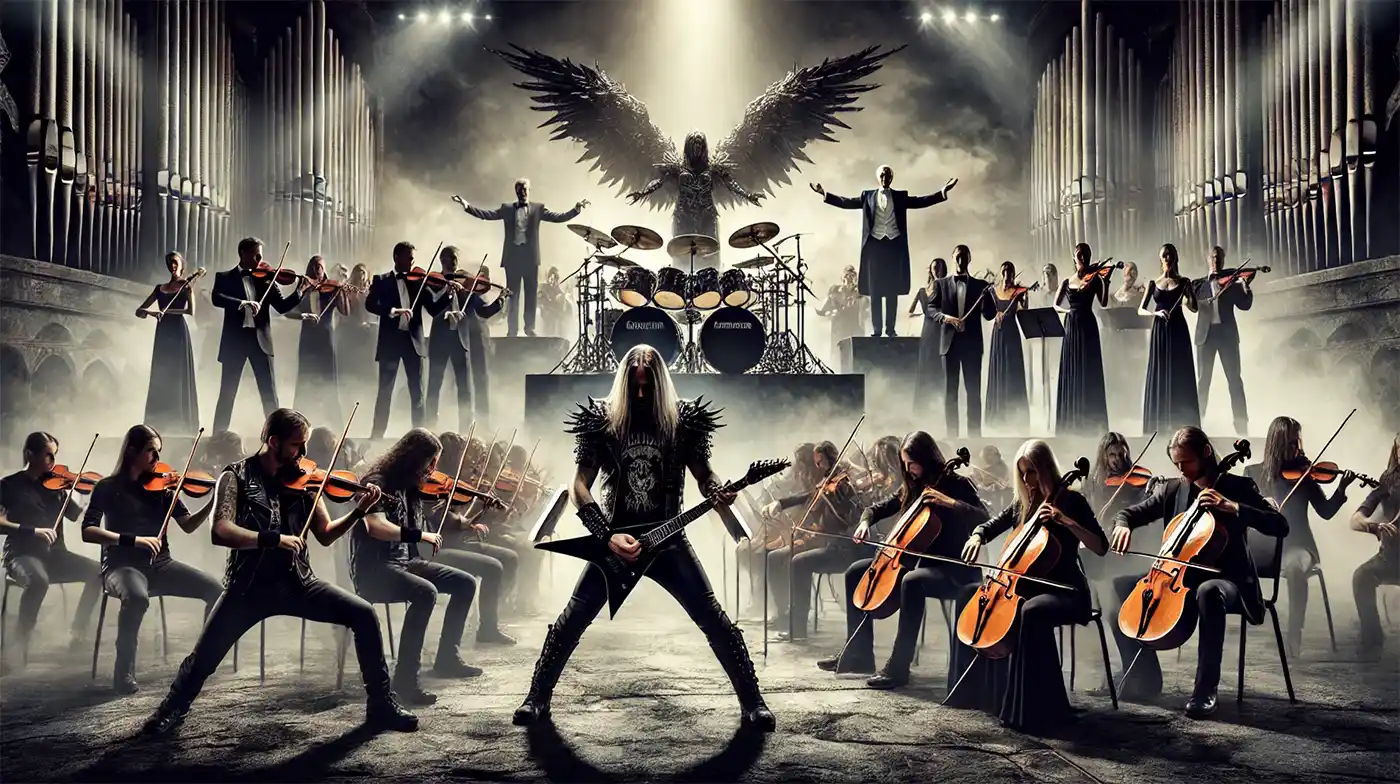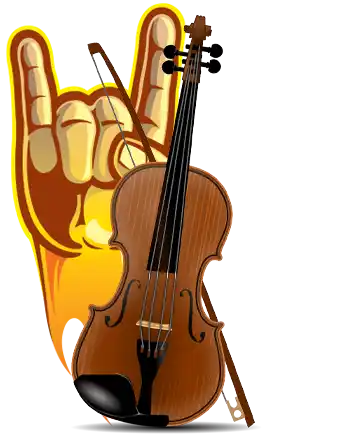Embracing the Grand Fusion of Heavy Metal and Orchestral Majesty
For those who find regular metal a bit too heavy, classical music a touch too quiet, and traditional rock not quite dramatic enough, there exists a musical genre that combines all three into an epic soundscape: symphonic metal! On Symphonic Metal Day, we pay tribute to the genre that doesn’t just play music—it orchestrates it. Imagine thundering guitars, a powerhouse rhythm section, sweeping violins, booming brass, and possibly a soprano belting high notes that would make any opera singer proud. Today, let’s dive into what symphonic metal is all about, its unique appeal, and why this genre deserves a dedicated day in its honor.
What Is Symphonic Metal?
Symphonic metal emerged in the late 1990s, a grandchild of the heavy metal genre and a distant relative of classical music. The genre combines the grit and power of heavy metal with the sweeping, layered sounds of an orchestra. Here, guitar riffs meet violins, double bass drums march alongside harpsichords, and choirs sing in Latin just because they can.
 At its core, symphonic metal takes all the technical proficiency, intensity, and passion of metal and amplifies it with orchestral elements, creating a sound that’s as grand as it is powerful. It’s like going to a rock concert in a castle or listening to Beethoven while wielding a battle axe. It’s operatic, it’s intense, and it’s truly a genre that “goes to eleven.”
At its core, symphonic metal takes all the technical proficiency, intensity, and passion of metal and amplifies it with orchestral elements, creating a sound that’s as grand as it is powerful. It’s like going to a rock concert in a castle or listening to Beethoven while wielding a battle axe. It’s operatic, it’s intense, and it’s truly a genre that “goes to eleven.”
Origins of Symphonic Metal
Symphonic metal may have been born in the smoky concert halls of metal festivals, but its roots lie in classical music. In fact, many symphonic metal musicians are trained in classical music and bring a wealth of musical knowledge that would make Bach and Mozart raise a toast. Bands like Therion, Nightwish, Epica, and Within Temptation were pioneers in fusing classical elements with metal, giving the world a new reason to headbang in a formal ball gown.
The genre gained popularity in the Nordic and European metal scenes, where some bands even perform with full orchestras on tour—imagine hauling a 30-piece orchestra around like a rock band! With its theatrical flair and musical complexity, symphonic metal caught on quickly and found a devoted fan base who loved both its power and its poetry.
The Magic Behind the Music: Why Symphonic Metal Is Special
1. Operatic Vocals and Epic Storytelling: Most symphonic metal bands don’t just sing songs; they tell epic tales of mythical lands, battles between good and evil, or deeply emotional journeys. Vocalists in this genre often range from sopranos to tenors, delivering powerful, high-reaching notes that resonate with the music’s intensity. The lyrics sometimes sound like they were taken from a Tolkien novel and translated into an ancient language for dramatic effect.
2. Musical Complexity: If you’ve ever seen a sheet of symphonic metal music, it might look like someone spilled ink all over the page. With multiple layers of instruments and complex arrangements, symphonic metal music isn’t just played; it’s composed, crafted, and meticulously arranged like a symphony. There’s a reason it’s called symphonic, after all!
3. A Unique Fan Experience: Symphonic metal concerts are part rock concert, part operatic performance, and part cinematic experience. It’s not unusual to see fans dressed up in Gothic attire, fantasy-themed outfits, or even Viking gear. Concerts might have laser lights, pyrotechnics, fog machines, and, of course, a few headbanging violinists. It’s as if Halloween and a music festival decided to join forces.
Symphonic Metal Bands You Should Know
If you’re new to symphonic metal, here are a few bands that encapsulate the genre’s unique fusion of heavy riffs and orchestral grandeur:
-
Nightwish: Founded in Finland, Nightwish is considered one of the genre's forefathers. Known for their mix of melodic and operatic sound, their songs often delve into fantasy and philosophical themes.
-
Epica: This Dutch band not only uses a full orchestra but also frequently features choral arrangements and explores profound themes of religion, philosophy, and science.
-
Within Temptation: Also hailing from the Netherlands, Within Temptation offers a lighter touch on the genre, blending symphonic elements with gothic rock influences.
-
Therion: If anyone deserves a statue in the symphonic metal hall of fame, it’s Therion. They were among the first to add operatic elements to their music, pioneering the genre in the early ’90s.
-
Kamelot: Mixing power metal with symphonic elements, Kamelot's music is emotional, intricate, and filled with elaborate narratives.

How to Celebrate Symphonic Metal Day
1. Throw a Symphonic Metal Listening Party: Grab some friends, don your best medieval or gothic attire, and blast some symphonic metal! To really get into the spirit, transform your living room into a castle—dim the lights, add some candles, and put a fog machine in the corner for ambiance. Make sure to include classic symphonic metal hits from Nightwish, Epica, and Therion, along with some lesser-known bands to spice things up.
2. Attend a Symphonic Metal Concert: If you’re lucky enough to live near a city with a vibrant metal scene, check out local concert listings. Symphonic metal bands put on an incredible live show, often bringing in orchestral instruments, backup choirs, and jaw-dropping visual effects. By the time the encore ends, you’ll feel like you’ve been through an emotional roller coaster in a medieval fantasy world.
3. Create Your Own Symphonic Metal Playlist: Whether you’re at work, driving, or going for a jog, symphonic metal makes a grand soundtrack to just about anything. Try making a playlist with a variety of bands and explore the different moods of the genre—from powerful anthems to haunting ballads. There’s a symphonic metal song for every moment!
4. Compose Your Own Epic Storyline: With themes like dragons, battles, mythical lands, and cosmic forces, symphonic metal practically begs for an accompanying storyline. Let your inner Tolkien loose and write your own mythic tale to go along with your favorite symphonic metal album. You don’t have to publish it—though if you do, maybe one of your favorite bands will pick it up for a future concept album!
Fun Facts About Symphonic Metal
-
Symphonic Metal Bands Often Collaborate with Orchestras: Many symphonic metal bands, especially the big ones, have actually recorded albums with full orchestras. It’s an expensive endeavor, but the result is worth every penny.
-
Singers Are Often Classically Trained: Many vocalists in symphonic metal have formal training in opera or classical music. Their powerful voices can range from baritone to soprano, giving the genre a unique vocal style that’s a blend of rock, opera, and classical.
-
Some Bands Perform Entire Albums as Stories: Symphonic metal isn’t just about individual songs; some bands release entire albums that tell a single cohesive story, much like a rock opera. If you listen from start to finish, it’s like journeying through a dramatic novel or a fantasy film.
Symphonic Metal Day is more than just a chance to bang your head to heavy riffs; it’s a celebration of artistry, storytelling, and musical ingenuity. Symphonic metal proves that heavy metal doesn’t always have to be rough and raw—it can be sophisticated, grand, and downright epic. So, if you’re in the mood for something that’s both powerful and poetic, turn up the symphonic metal, close your eyes, and let yourself be swept away by the music. And remember: you’re never too old to appreciate the sheer majesty of a genre that can combine thrashing guitars with an orchestra, all while keeping it dramatic enough for a gothic cathedral. Happy Symphonic Metal Day!
Please Share our Content






 At its core, symphonic metal takes all the technical proficiency, intensity, and passion of metal and amplifies it with orchestral elements, creating a sound that’s as grand as it is powerful. It’s like going to a rock concert in a castle or listening to Beethoven while wielding a battle axe. It’s operatic, it’s intense, and it’s truly a genre that “goes to eleven.”
At its core, symphonic metal takes all the technical proficiency, intensity, and passion of metal and amplifies it with orchestral elements, creating a sound that’s as grand as it is powerful. It’s like going to a rock concert in a castle or listening to Beethoven while wielding a battle axe. It’s operatic, it’s intense, and it’s truly a genre that “goes to eleven.”









 "Sláinte!" is a traditional Irish expression used as a toast, equivalent to "Cheers!" in English.
"Sláinte!" is a traditional Irish expression used as a toast, equivalent to "Cheers!" in English.